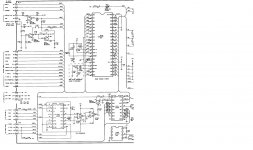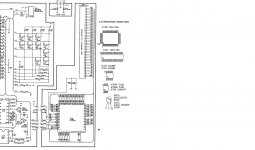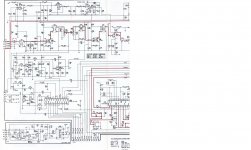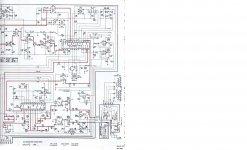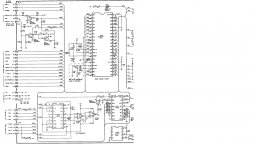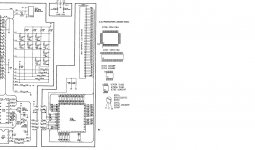If the actual receiver is working and will store presets whilst powered on but loose them once powered off, I'd imagine that instead of the CPU malfunctioning, it could be a faulty memory backup capacitor. These are usually low voltage, high capacitance capacitors which are charged while the unit is turned on and provide a small current to keep the presets maintained when turned off.
It has no memory Cap. Memory is on eeprom. I think eeprom is ok.
EEPROMS have a limited number of write cycles. Even the old ones were like 10,000 (new ones are many more) and while it's unlikely you've used that, the chips do fail.
It's also possible that the programming for the micro is going stupid. Mask programmed ROMs don't fail but EPROMS have been known to start slipping bits.
G²
Is it a seperate eeprom IC, or did they use the micro's built-in eeprom ? If the latter is the case, then you will have to replace the micro.
If it's a One Time Programmable that is likely true though if you are programming EXACTLY the same thing into it, it may just 'restore' the faulty bits. If the chip is an EEPROM or EPROM (UV window on top) type then just erasing and reprogramming it would work. There are security bits in many micros and if it is set, you're screwed n that you won't have access to the code that way.
FWIW Tektronix used 8751 microprocessors in the 17xx series scope and did NOT set the security bit so it is possible to read out a known good chip and program into a new chip. This isn't just theory, I've done it several times.
G²
If it's a One Time Programmable that is likely true though if you are programming EXACTLY the same thing into it, it may just 'restore' the faulty bits.
This is not what I meant. Microcontroller program ROM is usually either OTP or Flash these days, however micro's often now contain a portion of serial EEPROM that is supposed to be used for storing settings and suchlike, separate to the main Flash used for the programming.
This is fine for use where the EEPROM is not often written to, but for a domestic device which is saving settings frequently, it can be bad as it wears out, meaning a microcontroller replacement is required. It's much better design to use a 24C08 or suchlike that is external, and can be replaced. Of course, that costs more!
Diagrams are a bit small but the same advice remains.
stratus46 mentioned EEPROMS failing and I agree, the type used here have been known to give trouble generally... but it's not common.
Weird faults usually have a simple cause. Doesn't sound like a keyscan issue (multiplexed lines to front panel controls) but worth looking.
It's surprising how many "faults" like this can be "fixed" by removing ALL power and discharging ALL rails and then slappping a piece of aluminium foil onto the print side of the pcb to short everything out and leave it like that for 24 hours. Certain manufacturers have products that do lock up for no reason.
And the other big big cause... spillage and contamination.
stratus46 mentioned EEPROMS failing and I agree, the type used here have been known to give trouble generally... but it's not common.
Weird faults usually have a simple cause. Doesn't sound like a keyscan issue (multiplexed lines to front panel controls) but worth looking.
It's surprising how many "faults" like this can be "fixed" by removing ALL power and discharging ALL rails and then slappping a piece of aluminium foil onto the print side of the pcb to short everything out and leave it like that for 24 hours. Certain manufacturers have products that do lock up for no reason.
And the other big big cause... spillage and contamination.
- Status
- This old topic is closed. If you want to reopen this topic, contact a moderator using the "Report Post" button.
- Home
- Amplifiers
- Solid State
- NAD705
